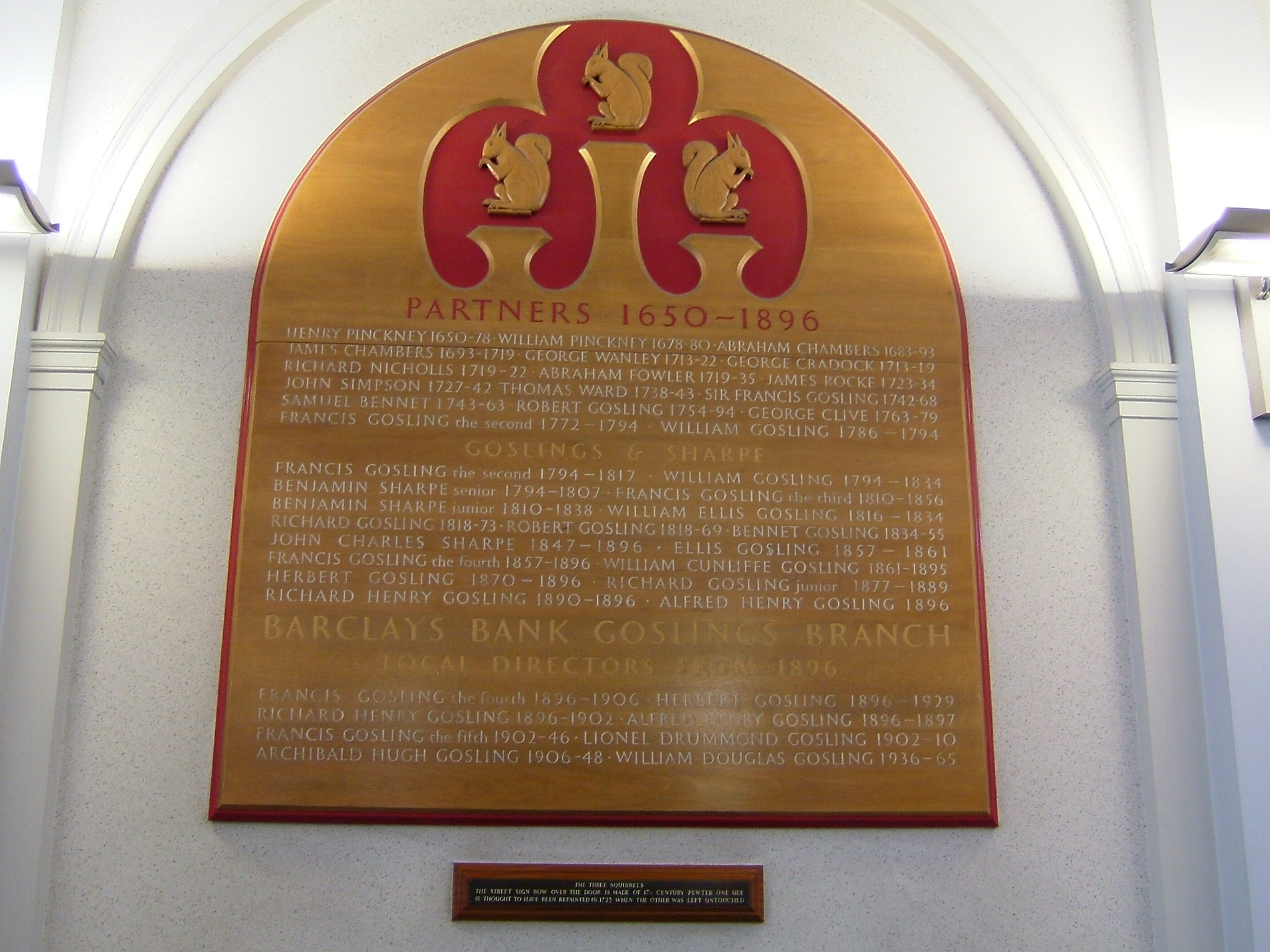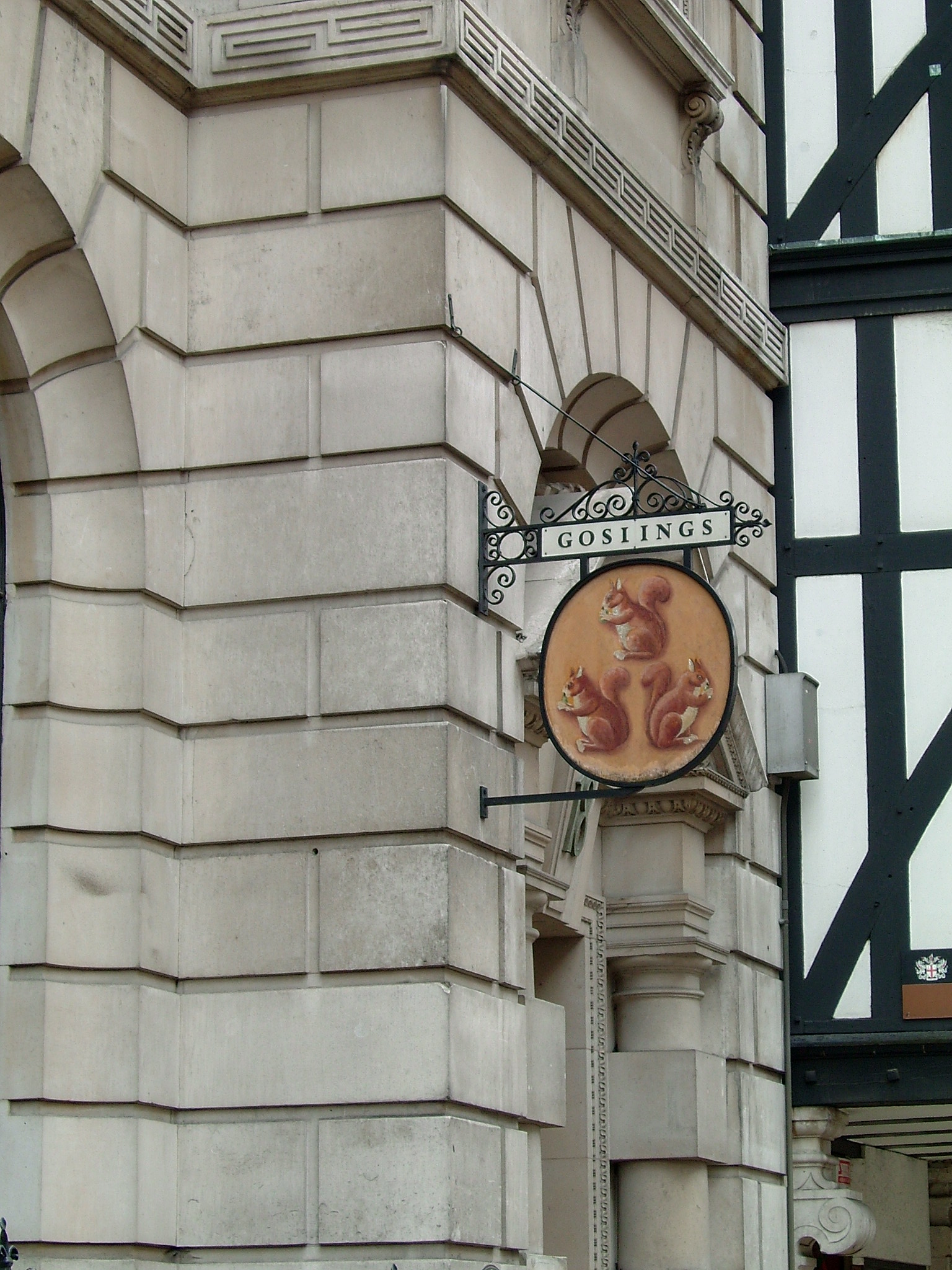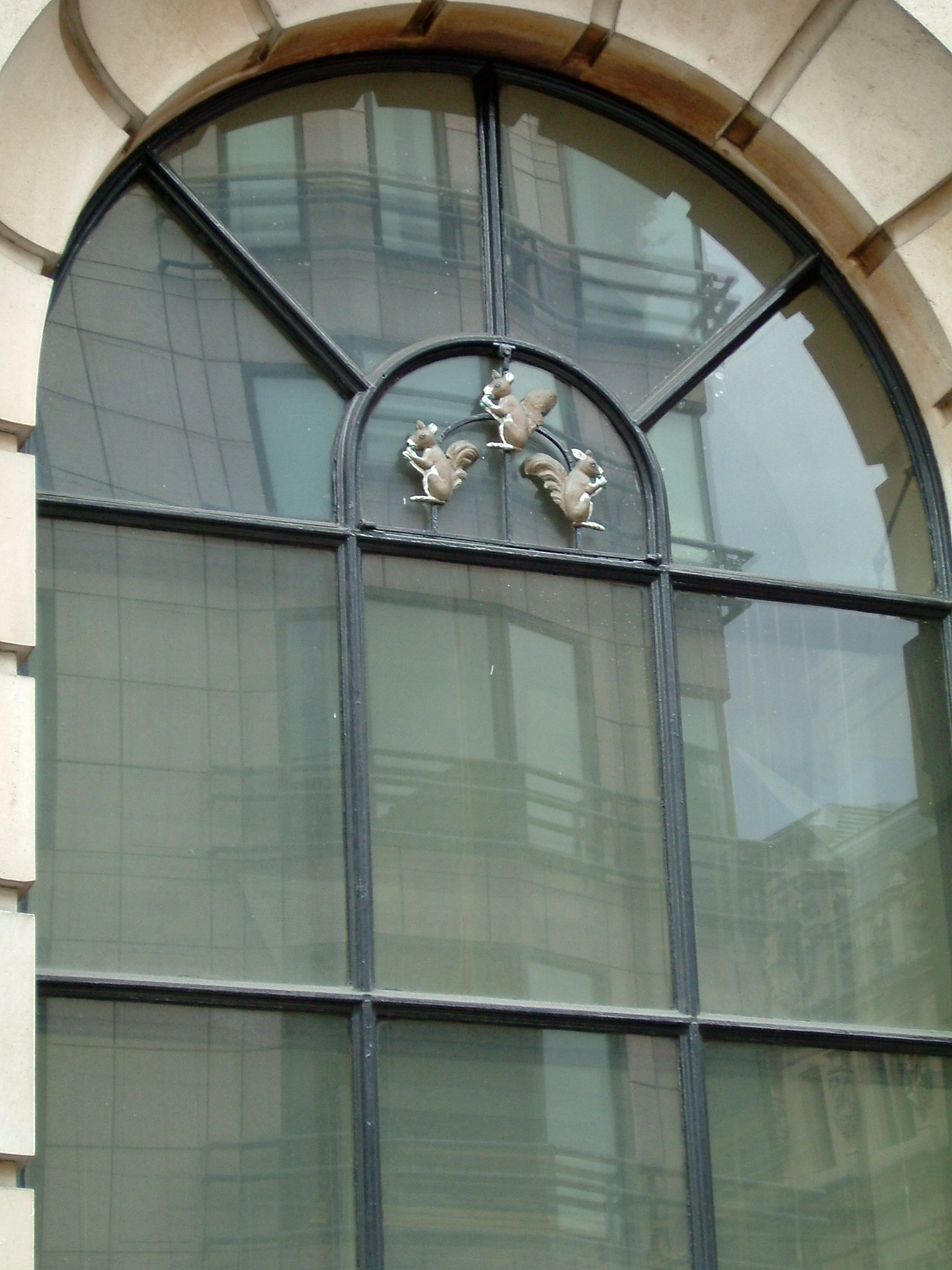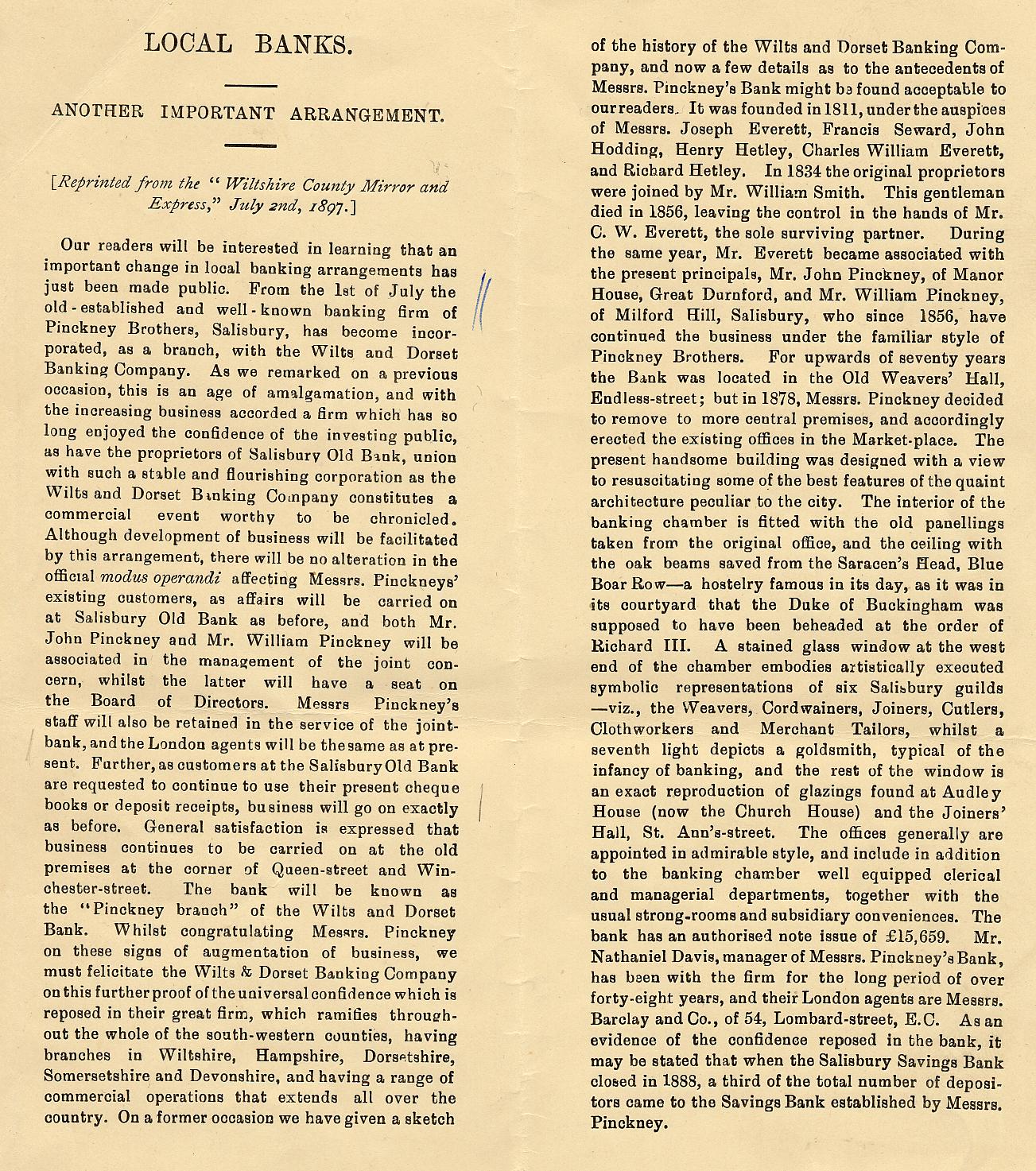I have been meaning to write this page for some time. In my travels I have come across a number of references to Pinckney's and Banks so I thought it about time that I created a page to record what I have found.
The banking profession seems to have come into being in the mid 1600s. It started with Goldsmiths. They were the money men of their time and their business progressed to money lending and issuing guarantees and so forth. The guarantees became cheques, gold was replaced by bank notes and coins and banks were born.
The Three Squirrels
see The British Banking History Society. see WikipediaFor the Pinckney's banking started with Henry Pinckney. Henry was born in Wiltshire in 1614 and by 1628 he was an apprentice goldsmith in London. This lasted for eight years and when he was qualified he openned his premises at "The sign of the Three Squirrels, over against St Dunstan's Church in Fleet Street". He became a friend of the diarist Samuel Pepys and is mentioned in his diary. See my page on Samuel Pepys and go to the page for Saturday 1st December 1660. Henry also knew and did business with King Charles II.
Henry's premises were burnt down in the Great Fire of London in 1666 but they were rebuilt soon after. There has been a bank on the premises ever since. It has gone through many changes over the years. For a long time it was owned by Gosling Brothers and it finally became part of Barclay's Bank and still is to this day. There was literally a Sign of the Three Squirrels hanging outside the bank but this has been removed and is now in the Barclays Bank archives.
I have been to the bank and the windows still contain the image of the Three Squirrels. Inside in the main banking hall is a large wooden plaque on the wall listing all of the owners of the bank and the very first entry is Henry Pinckney.




The Salisbury Bank
The next Banking adventure for the Pinckney's was in the mid 1800's and the Salisbury Bank. See British Banking History Society
The Salisbury Bank was owned in the nineteenth century by William and John Pinckney. The bank started life in about 1810 as The Salisbury Old Bank being owned by a partnership of six people. As the founder members all died it became Everett Seward and Co, then it became Everett and Hetley. The brothers bought it from the last surviving original member when it was Everett and Co in about 1859 and it became Everett and Pinckney and finally Messrs. Pinckney Brothers Bank. It was situated in the Market Place in Salisbury. It was eventually merged with the Wiltshire and Dorset Banking Company in 1897 and finally ended as part of Lloyds Bank.
William was co-proprietor of the bank with his brother until the merger and he then became a director of the Wiltshire and Dorset.
Here is a brief description of the history of the Lloyds bank branch in Salisbury supplied by Lloyds Banking Group Archives.
Everett & Co. first opened a bank in Salisbury in 1811, situated in the Old Weavers’ Hall, Endless Street. After changes in ownership it became known as Pinckney Brothers in 1856, later moving to new premises designed by Henry Hall and located in the Market Place in 1878. By 1897 it had been absorbed by the Wiltshire and Dorset Banking Company.
The Wiltshire and Dorset Banking Co. had had a branch in the city since 1835, located in premises in Blue Boar Row. These premises were extended in 1869 through the purchase of shops and the former Three Tuns Inn, again designed by Henry Hall. By 1907 both branches of the Wiltshire & Dorset Banking Company had merged in these premises, now known as number 38, Blue Boar Row. The Wiltshire & Dorset Banking Company was absorbed by Lloyds Bank in 1914.
The Hampshire Banking Co. also opened a branch in 1869, which amalgamated with the North Wiltshire Banking Company in 1877 to form the Hampshire & North Wiltshire Banking Company. A year later this company was renamed the Capital and Counties Bank, and was situated at 32 Market Place, Salisbury. Capital and Counties was absorbed by Lloyds Bank in 1918, and by 1919 had merged with the other branch in the old Wiltshire and Dorset premises at 38 Blue Boar Row.
In addition they have supplied a copy of a newspaper article (Ref A/51/12/d/1) from the "Wiltshire County Mirror and Express" dated 2nd July 1897. It describes the merger of the Pinckney Brothers Bank with the Wiltshire & Dorset Banking Company and provides some great detail about the Pinckney brothers.

Tanner and Pinckney's Bank
The was also a Tanner and Pinckney's Bank in Marlborough in Wiltshire and a branch of it also existed in Hungerford. At the moment I don't have any more
information about this bank but when I found out more I will add it.







